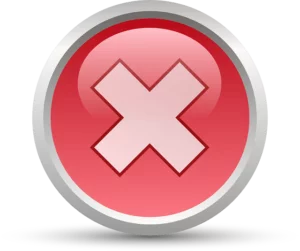We all know that being positive is a good thing, but are there are times when a little negativity goes a long way. That’s especially true when it comes to keywords.
A while back, we recommended negative keywords as part of our 2023 Definitive Guide to Product Listing Ads. In that post, we noted how negative keywords can help your PPC (pay per click) campaign target the exact audience that’s relevant to your business while reducing the amount of non-converting traffic your ads receive.
After that blog went up, LSEO received a number of messages from readers asking for more information on exactly what negative keywords are and how they work. Today, we’re going to answer all your questions and even provide a few helpful tips about how to use negative campaigns in your own PPC campaigns.
Wait a Second, What Are Keywords Again?
Keywords are the basic building blocks of every PPC campaign. Not only are they the thing that allows audiences to find you, but they’re also the thing that allows you to target specific audiences.
Okay, so before we get into negative keywords, here’s a quick refresher on keywords in general.
There are subtle differences between keywords and search terms, but they are basically the same thing. Well, sort of…
See, when a user types a query into Google, that’s what’s called a search term. Keywords, essentially, are search terms that a marketer or business specifically targets in order to increase traffic to their website. In other words, keywords are precise queries that marketers/businesses make sure to include in their ads and in their page content because people are searching for them.
The better an ad or other piece of marketing content is optimized for a certain keyword, the more likely it is that people querying it will find your company. If I sell refurbished computers, for instance, I might want to target the keyword “buy refurbished computer” because that is a query that my target audience is likely to search for.
Picking the right keywords might seem fairly straightforward, but it’s important to remember that there are virtually infinite keywords and variations on keywords. What’s more, there may be hundreds, thousands, or even millions of other businesses competing with you for the same audience. The better you understand your customers’ search intent, the better equipped you will be to reach those customers and to elbow your way ahead of the competition.
How Are Negative Keywords Different From Other Keywords?
First things first: negative keywords are not evil keywords from an alternate universe. Got it?
Now that we’ve settled what negative keywords aren’t, we can explain what they are. Think of it like this: if “normal” keywords are searched words or phrases that you want your business to rank for, negative keywords are searched words or phrases that you don’t want your business to rank for.
Why would you ever want to not appear in a search, though? That seems counterintuitive to the whole point of digital marketing, doesn’t it?
Well, let’s go back to our example from earlier. Say you run a business that sells refurbished computers. Let’s look at some of the results a user gets when searching for “buy refurbished computer.”
In the screenshot above, we have four different links. Three of the links actually lead to vendors selling refurbished computers. One of those three leads not to a sales page but to a piece of informational content. Meanwhile, the completely unrelated fourth link doesn’t lead to a vendor at all, but to a recycling company.
Keep in mind, by showing you these results we don’t mean to suggest that a refurbished computer seller shouldn’t be targeting the keyword “buy refurbished computer.” Rather, we’re showing you examples of a few related keywords that are unlikely to result in conversions.
Simply put, people who are searching for “refurbished computer worth the risk” or “what to know before buying a refurbished computer” aren’t deep enough into the content marketing funnel for you to target them with Google Ads.
Since Google Ads are paid for using a CPC (cost per click) model. This means you have to cough up cash every time someone clicks on your ad link. That’s why it’s important to make sure your ads are optimized to appeal to users who are deep enough in the content marketing funnel that, when they click that link, there’s a good chance they will actually make a purchase.
Looking at the screenshot above, our hypothetical refurbished computer seller has found some prime negative keywords to factor into their PPC campaign. Creating a negative keywords list in Google Ads means that your ad links will appear for the keywords you want to target but not for related but ultimately tangential keywords.
What Are the Benefits of Using Negative Keywords?
Now that you have an understanding of what negative keywords are, you might still be unclear about what the big deal is. Isn’t having “normal” keywords good enough? Do the advantages of negative keywords really justify their use?
The answer to the first question is “no.” The answer to the second question is “yes.”
Here’s why…
Negative Keywords Increase Your Click-Through Rate
Your campaign’s CTR (click-through rate) refers to how many times your ad is clicked in relation to how many times it is displayed in search results. Links with a high CTR don’t just get more conversions; they also rank better.
The higher your ad ranks for a certain search query, the more likely it is to be seen by users… which means the more likely it is to be clicked… which means the more likely it is to convert… which means the higher it ranks next time. Lather, rinse, repeat. It’s a snowball effect where the more momentum you have, the more you gain.
Negative Keywords Put Your Budget to Better Use
As noted earlier, Google Ads operates using a CPC model, meaning that whenever someone clicks on your ad link, that comes directly out of your Google Ads budget. Using negative keywords is a great way of preventing costly clicks from users who are unlikely to convert.
By keeping your ad link out of the search results of users who aren’t specifically looking to buy, you reduce the number of unprofitable clicks and increase your ROI (return on investment). The money you save can then be put to better use on other digital marketing efforts.
Negative Keywords Create More Conversions, More Profits
Speaking of ROI, let’s talk about the biggest benefit that negative keywords offer: higher conversion rates. Negative keywords don’t just exclude certain search queries and users; in effect, they hyperfocus your audience targeting capabilities, enabling you to appeal directly to the users looking for the products and services you offer.
If all negative keywords were good for was cutting costs, that would be enough to recommend them. But because negative keywords have the potential to also raise your profits, that makes them downright essential for any successful Google Ads campaign. Don’t miss out.
So How Do I Use Negative Keywords in My PPC Campaign?
There are two main ways of adding negative keywords to your PPC campaign. You can do it either by using the Google Ads Search Terms report or you can manually create a negative keywords list. Neither method is necessarily better or worse than the other, but one may be more expedient in certain circumstances.
Add Negative Keywords via the Search Terms Report
First, log in to your Google Ads account. Once you’ve done that, direct your cursor to the “Keywords” tab in the left sidebar, then find the button under that labeled “Search terms.”
This will take you to your Google Search Terms Report, which tracks which user queries have been triggering the appearance of your ads, as well as how close those queries match the keywords your ads are actively targeting.
So let’s say you run a live entertainment booking business for parties. In the image above, you can see that searchers looking for “book a mariachi band” and “hire musicians for party” are just some of the ones who see your Google Ad. However, searchers looking for “booking agent for musicians” and “booking agents for bands” are also seeing your ad.
Now, hypothetically, let’s say you’re business is only interested in renting out musician services, but it is not interested in finding new talent for whatever reason. That is specifically what your ad is about.
In this case, an argument could be made that someone querying “booking agent for musicians” is likely someone who is themself a musician hoping to find an agent. Of course, you should research search intent to get a better idea of just how much overlap there may or may not be between audiences. But for the purposes of this hypothetical, let’s say there’s no overlap at all.
In this scenario, your Google Ad is appearing in dozens if not hundreds or even thousands of irrelevant searches every single day. How can you add these keywords to your negative keywords list?
First, put a check mark in the box next to the keywords in question.
When you do this, a little blue box will automatically appear at the top of the Google Search Terms Report. Here, you will have two options: “Add as a keyword” and “Add as a negative keyword.”
This method is good if you don’t have a lot of ads or campaigns to manage, or if your Search Terms Report comes back with just a few pages of results. For larger campaigns where the report has page after page after page of search terms to sift through, you might want to stick with the next method instead.
Add Negative Keywords by Creating a List Manually
The advantage of the above method for building your negative keywords list is that it allows you to see exactly which unrelated keywords are interfering with your Google Ads campaign. That said, it also helps to be proactive.
In other words, manually create a list of negative keywords on your own before you even launch the campaign. This is especially helpful if you are already aware of related keywords that might trigger your ads. For example, if you run an automobile repair business, you might want to proactively avoid keywords associated with automobile sales, replacement part sales, or DIY how-to repair guides.
Instead of waiting for these queries to show up in your Search Terms Report, you can create your own negative keywords list by clicking on the “Tools and Setting” tab in the upper right of your Google Ads account.
Doing this will cause a drop-down menu to appear. This menu contains several sub-menus, including one called “Shared Library.” In this menu, you will find an option for “Negative keyword lists.” Click it.
This will take you to a new screen where you can see and alert any negative keyword lists you have already created. This is extremely helpful if you are juggling multiple campaigns, clients, or ads.
In the example below, there are no negative keyword lists yet, so let’s create on. All you have to do is click the little blue circle with the plus sign in the middle.
This will take you to yet another new screen. This screen has two blank fields, one for you to name your list and another for you to create the list itself. You can make your list as short or as long as needed. Don’t worry, you can always add or remove keywords later. You can also add this list to another preexisting list if you want.
That’s really all there is to it. The actual process of creating and applying negative keyword lists is rather intuitive and user-friendly. The hard part is determining which keywords should be classified as “negative” to begin with.
As noted earlier, the number of variations on even short-tail keywords is astronomical. As you begin moving more into long-tail keywords, which tend to be the ones with the highest conversion rates, the number of variations multiples exponentially… and so does the competition.
Is There Someone Who Can Help Me with Negative Keywords?
You bet there is!
If you’re looking to optimize, streamline, and super-charge your paid media marketing efforts, LSEO is the PPC agency you’ve been looking for. We offer a full range of results-driven PPC marketing services, in addition to SEO and social media marketing services.
Whatever the unique needs of your business, we can provide expert guidance and strategizing to help you maximize your audience reach and conversions while minimizing your costs.
If you have questions about negative keywords, PPC, or any other digital marketing topics, contact LSEO today. We have the answers you’re looking for!



